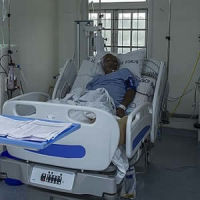Sepsis is a life-threatening condition and early diagnosis is crucial to ensure that treatment is not delayed. However, as current diagnostic methods are imprecise, the condition is misdiagnosed in 30 percent of patients. Now a microfluidic device developed by Massachusetts General Hospital (MGH) for measuring neutrophil motility shows promise in the rapid and accurate detection of sepsis, according to a study published in the journal Nature Biomedical Engineering.
Neutrophils are a type of white blood cell. "During sepsis, factors present in the plasma of these patients induce neutrophils to migrate spontaneously when placed into the mazes of our microfluidic device, and we were able to identify migration patterns specific to sepsis," said lead Felix Ellett, PhD, a postdoctoral fellow in the BioMEMS Resource Center in the MGH Department of Surgery.
Neutrophil dysfunction is known to be a hallmark of sepsis, and a 2014 study led by Daniel Irimia, MD, PhD, associate director of the BioMEMS Resource Center and senior author of the current study, found that changes in the movements of isolated neutrophils – including rapid, spontaneous motion not induced by a chemical attractant – could predict which patients were likely to develop sepsis. This led the researchers to hypothesise that measuring the spontaneous movement or motility of neutrophils in a whole blood sample could amplify the changes observed in that earlier study.
The microfluidic device measures around 5 millimetres in diameter and consists of a central chamber surrounded by filters that keep red blood cells and other blood components confined. Neutrophils are able to pass through the filters and enter a maze of channels within which their patterns of motion can be observed. The researchers analysed these patterns in blood samples taken from 23 intensive care patients at various times during hospitalisation. The MGH team identified five neutrophil parameters – number of neutrophils, their oscillations within the channels, the time spent not moving, reverse migration back into the central chamber, and the average distance migrated – that could be used to develop a Sepsis Score that accurately discriminated patients with sepsis from those without.
The team confirmed these observations by testing samples from a separate group of 19 patients from a different ICU, and their results were more than 95 percent accurate in determining whether patients did or did not have sepsis.
"Using blood samples taken from patients on the first day of hospitalisation, the assay identified sepsis patients with very high accuracy," said study co-author Jarone Lee, MD, medical director of the Blake 12 Intensive Care Unit at MGH. "We believe that this approach may allow us to identify patients at risk of developing sepsis earlier than any current method."
Additional studies of this assay in larger and more diverse groups of patients are now underway at the MGH.
Source: Massachusetts General Hospital
Image Credit: Felix Ellett, PhD, BioMEMS Resource Center, Department of Surgery, Massachusetts General Hospital
Latest Articles
Sepsis, microfluidic device, neutrophil motility, detection of sepsis
Sepsis is a life-threatening condition and early diagnosis is crucial to ensure that treatment is not delayed. However, as current diagnostic methods are imprecise, the condition is misdiagnosed in 30 percent of patients. Now a microfluidic device develop



























